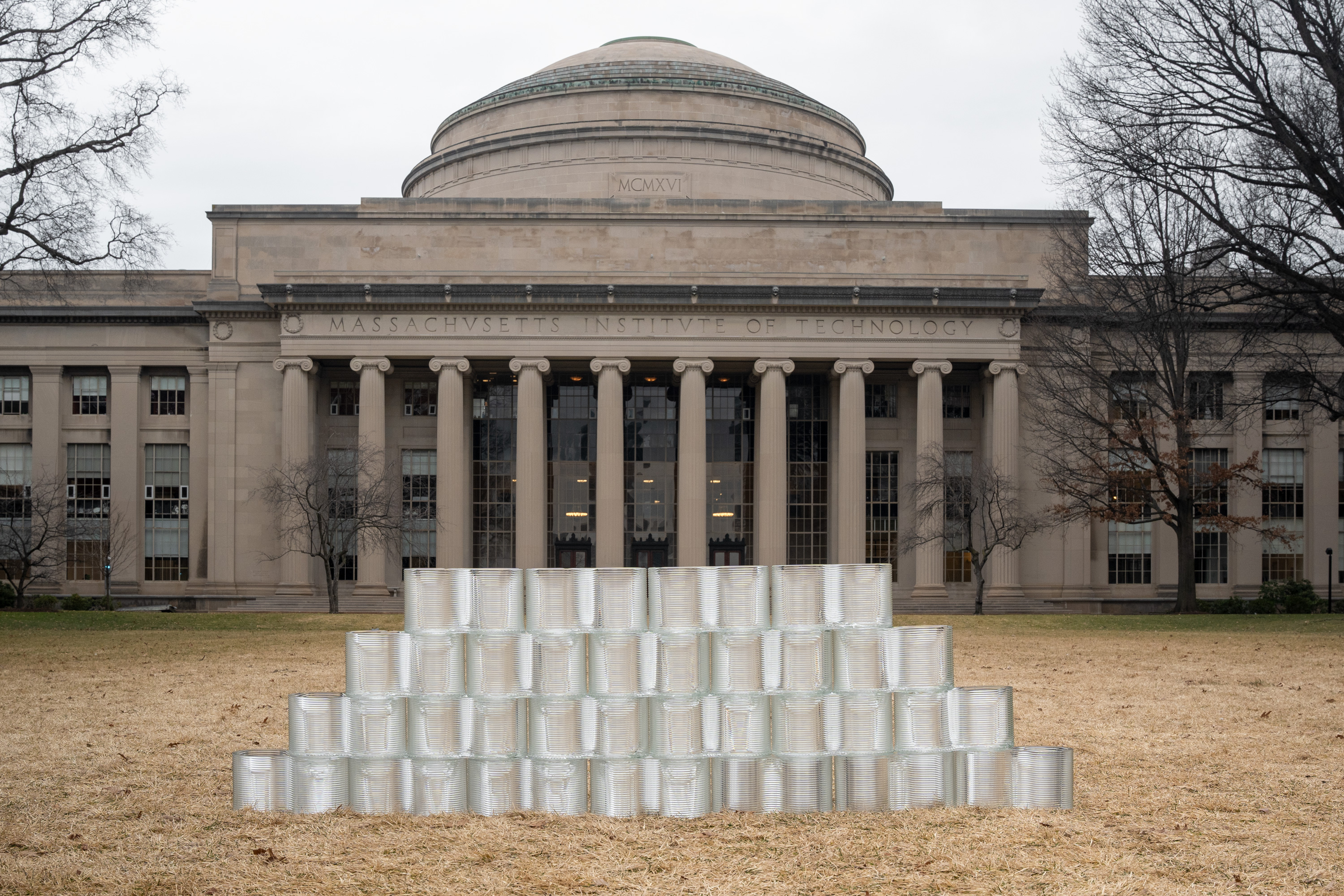What if building supplies could possibly be put collectively and brought aside as simply as LEGO bricks? Such reconfigurable masonry could be disassembled on the finish of a constructing’s lifetime and reassembled into a brand new construction, in a sustainable cycle that would provide generations of buildings utilizing the identical bodily constructing blocks.
That’s the concept behind round building, which goals to reuse and repurpose a constructing’s supplies each time attainable, to attenuate the manufacturing of recent supplies and cut back the development trade’s “embodied carbon,” which refers back to the greenhouse gasoline emissions related to each course of all through a constructing’s building, from manufacturing to demolition.
Now MIT engineers, motivated by round building’s eco potential, are creating a brand new type of reconfigurable masonry constructed from 3D-printed, recycled glass. Utilizing a customized 3D glass printing know-how supplied by MIT spinoff Evenline, the crew has made sturdy, multilayered glass bricks, every within the form of a determine eight, which might be designed to interlock, very similar to LEGO bricks.
In mechanical testing, a single glass brick withstood pressures much like that of a concrete block. As a structural demonstration, the researchers constructed a wall of interlocking glass bricks. They envision that 3D-printable glass masonry could possibly be reused many occasions over as recyclable bricks for constructing facades and inside partitions.
“Glass is a extremely recyclable materials,” says Kaitlyn Becker, assistant professor of mechanical engineering at MIT. “We’re taking glass and turning it into masonry that, on the finish of a construction’s life, could be disassembled and reassembled into a brand new construction, or could be caught again into the printer and changed into a very totally different form. All this builds into our concept of a sustainable, round constructing materials.”
“Glass as a structural materials type of breaks folks’s brains just a little bit,” says Michael Stern, a former MIT graduate pupil and researcher in each MIT’s Media Lab and Lincoln Laboratory, who can be founder and director of Evenline. “We’re displaying this is a chance to push the boundaries of what’s been carried out in structure.”
Becker and Stern, with their colleagues, element their glass brick design in a research showing in the present day within the journal Glass Buildings and Engineering. Their MIT co-authors embody lead creator Daniel Massimino and Charlotte Folinus, together with Ethan Townsend at Evenline.
Lock step
The inspiration for the brand new round masonry design arose partly in MIT’s Glass Lab, the place Becker and Stern, then undergraduate college students, first discovered the artwork and science of blowing glass.
“I discovered the fabric fascinating,” says Stern, who later designed a 3D printer able to printing molten recycled glass — a undertaking he took on whereas learning within the mechanical engineering division. “I began pondering of how glass printing can discover its place and do attention-grabbing issues, building being one attainable route.”
In the meantime, Becker, who accepted a school place at MIT, started exploring the intersection of producing and design, and methods to develop new processes that allow modern designs.
“I get enthusiastic about increasing design and manfucaturing areas for difficult supplies with attention-grabbing traits, like glass and its optical properties and recyclability,” Becker says. “So long as it’s not contaminated, you possibly can recycle glass virtually infinitely.”
She and Stern teamed as much as see whether or not and the way 3D-printable glass could possibly be made right into a structural masonry unit as sturdy and stackable as conventional bricks. For his or her new research, the crew used the Glass 3D Printer 3 (G3DP3), the newest model of Evenline’s glass printer, which pairs with a furnace to soften crushed glass bottles right into a molten, printable kind that the printer then deposits in layered patterns.
The crew printed prototype glass bricks utilizing soda-lime glass that’s sometimes utilized in a glassblowing studio. They included two spherical pegs onto every printed brick, much like the studs on a LEGO brick. Just like the toy blocks, the pegs allow bricks to interlock and assemble into bigger constructions. One other materials positioned between the bricks stop scratches or cracks between glass surfaces however could be eliminated if a brick construction had been to be dismantled and recycled, additionally permitting bricks to be remelted within the printer and fashioned into new shapes. The crew determined to make the blocks right into a figure-eight form.
“With the figure-eight form, we will constrain the bricks whereas additionally assembling them into partitions which have some curvature,” Massimino says.
Stepping stones
The crew printed glass bricks and examined their mechanical power in an industrial hydraulic press that squeezed the bricks till they started to fracture. The researchers discovered that the strongest bricks had been capable of maintain as much as pressures which might be similar to what concrete blocks can face up to. These strongest bricks had been made largely from printed glass, with a individually manufactured interlocking characteristic that hooked up to the underside of the brick. These outcomes recommend that the majority of a masonry brick could possibly be constructed from printed glass, with an interlocking characteristic that could possibly be printed, forged, or individually manufactured from a distinct materials.
“Glass is a sophisticated materials to work with,” Becker says. “The interlocking components, constructed from a distinct materials, confirmed probably the most promise at this stage.”
The group is wanting into whether or not extra of a brick’s interlocking characteristic could possibly be constructed from printed glass, however doesn’t see this as a dealbreaker in transferring ahead to scale up the design. To show glass masonry’s potential, they constructed a curved wall of interlocking glass bricks. Subsequent, they intention to construct progressively greater, self-supporting glass constructions.
“We now have extra understanding of what the fabric’s limits are, and methods to scale,” Stern says. “We’re pondering of stepping stones to buildings, and need to begin with one thing like a pavilion — a short lived construction that people can work together with, and that you can then reconfigure right into a second design. And you can think about that these blocks may undergo numerous lives.”
This analysis was supported, partially, by the Bose Analysis Grant Program and MIT’s Analysis Help Committee.

